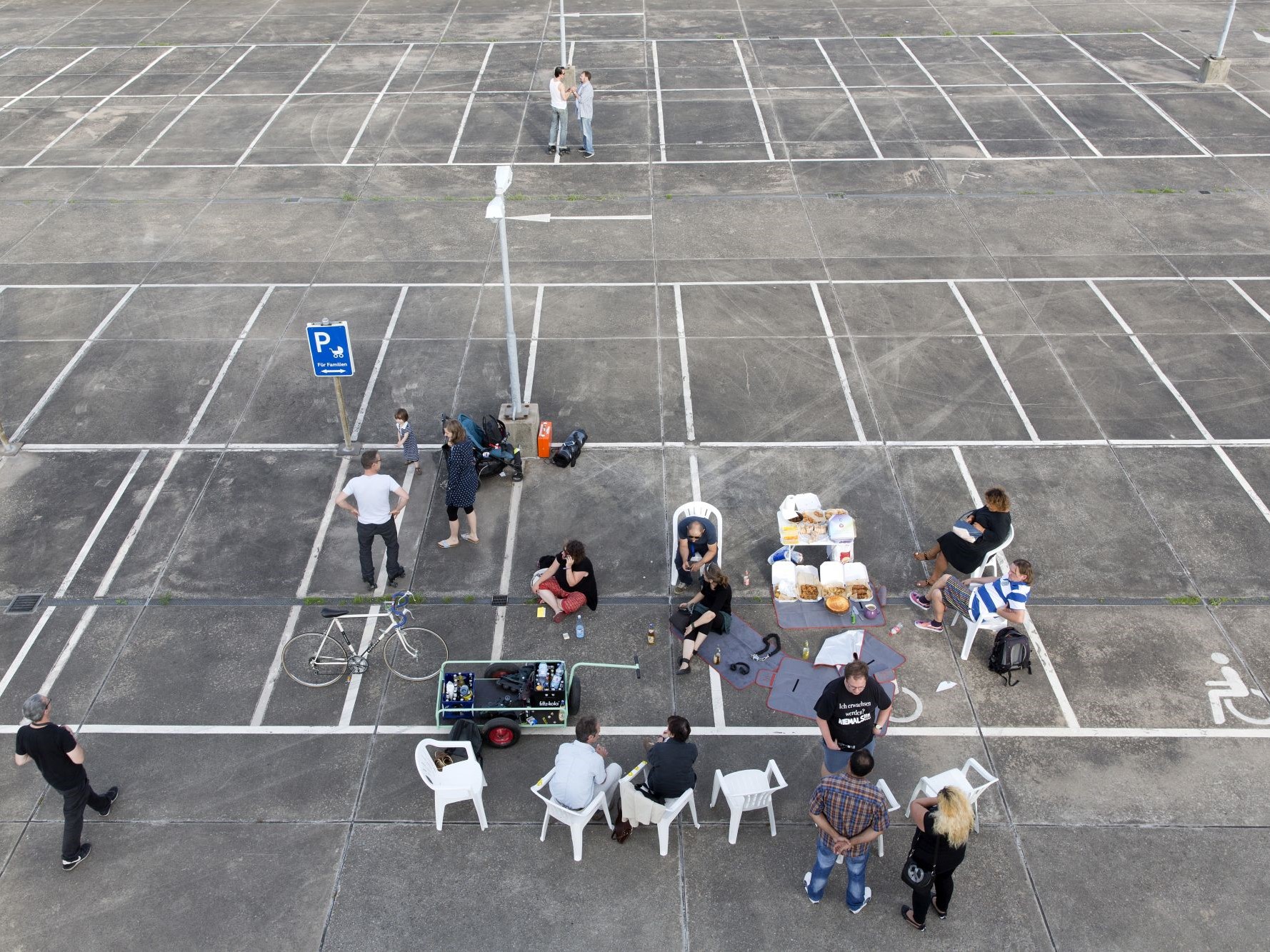Text: Stefan Ghenciulescu
Foto: Rainer Schlautmann, Sebastian Asiedu
Which things make a city? But what about a good city? In September, a dragon, a chewing gum museum, a storyteller with love letters, a garden in the middle of the street and several other invaders slipped into a city of the Ruhr and questioned its identity and future. I was visiting the new city proposed by curators and artists and this is my story about it.
Oberhausen
It’s a city with issues. It appeared and grew, like many others in the Ruhr region, around the mines and then the factories, during the explosive industrial development in Germany at the end of the 19th century and the early part of the 20th century. Then came the colossal destruction during the war, and then the tragedy of massive de-industrialisation, with all its retinue of huge unemployment, financial problems, and so on.
Many cities, especially the largest ones, have recovered. Through a very energetic urban strategy, the (fabulous) post-industrial heritage became one of the main factors of development in the region, along with intensive support of the arts and creative industries and with an ambitious re-forestation and ecological development. Smaller towns have a more difficult time – jobs go away, people leave, old or recent migration does not happen without friction, the alternatives are more limited anyway. Oberhausen is a good example. In an attempt to revitalize it, a few years ago it was allowed to place a gigantic shopping mall just outside the center. Apparently it is the biggest mall in Europe, and it surely employs lots of people. But it gave a bitter blow to the center, which is almost completely drained of activities. The complex is even innocently or cynically called, “Neue Mitte” – the new middle, the new center. Meanwhile, the city also benefits from its absolutely remarkable industrial heritage, including the former Gasometer, that havs become art center; and the City Theatre, today considered one of the best and most innovative in Germany.
The New Oberhausen
Actopolis, the international program organized by Goethe Institut and Urbane Künste Ruhr and dedicated to the future of urbanity, brought together artists, actions and, most importantly, cities in complicated areas – the Balkans, and from Germany, Oberhausen. The curators, the open collective Geheimagentur, worked with Ehrlich Arbeit -Freies Kulturbüro and they proposed interventions not only within the city but even symbolically building a new one. But it is not about an actual new city next to the old one; nor replacing through tabula rasa all traces of modernism or totalitarian regimes. This was a kind of urbanism with very different means, at the same time energetic and pleasant. The new city coexists with the old one. It overlaps partially, it exploits the cracks and (almost) abandoned places, puts it into question, but keeps working with it and not against it. It is built by curators and artists, but also by its residents. The city was composed of many places and events, of which I will mention only a few.
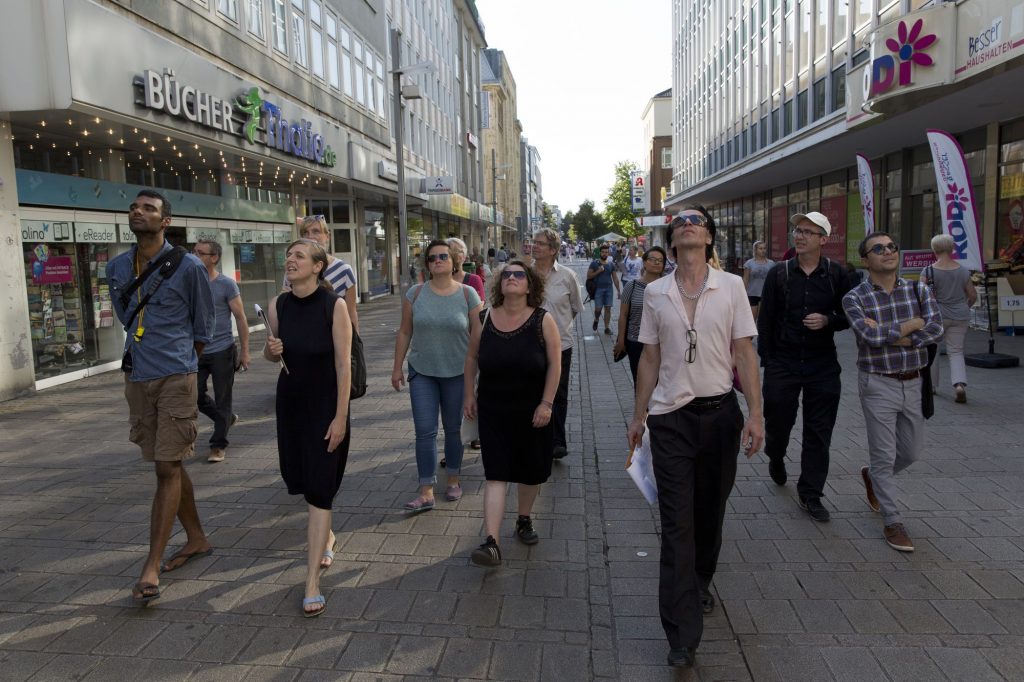 *Guided tour © Rainer Schlautmann, Urbane Künste Ruhr
*Guided tour © Rainer Schlautmann, Urbane Künste Ruhr
Throughout the program, in an unused space of the old train station, the new city center emerged: it was the headquarters of the organizers, because any conquest starts from the center, but also the main venue for meetings, information, conference and party. In the station square, a trailer from We Are Visual (Felix Jung and Marc Einsiedel) did not sell kebap, but held workshops for ideas for the new town, and that’s where Marie-Luise O’Byrne-Brandl became the amorous writer in residence, providing free assistance to residents and travellers in the drafting of love letters.
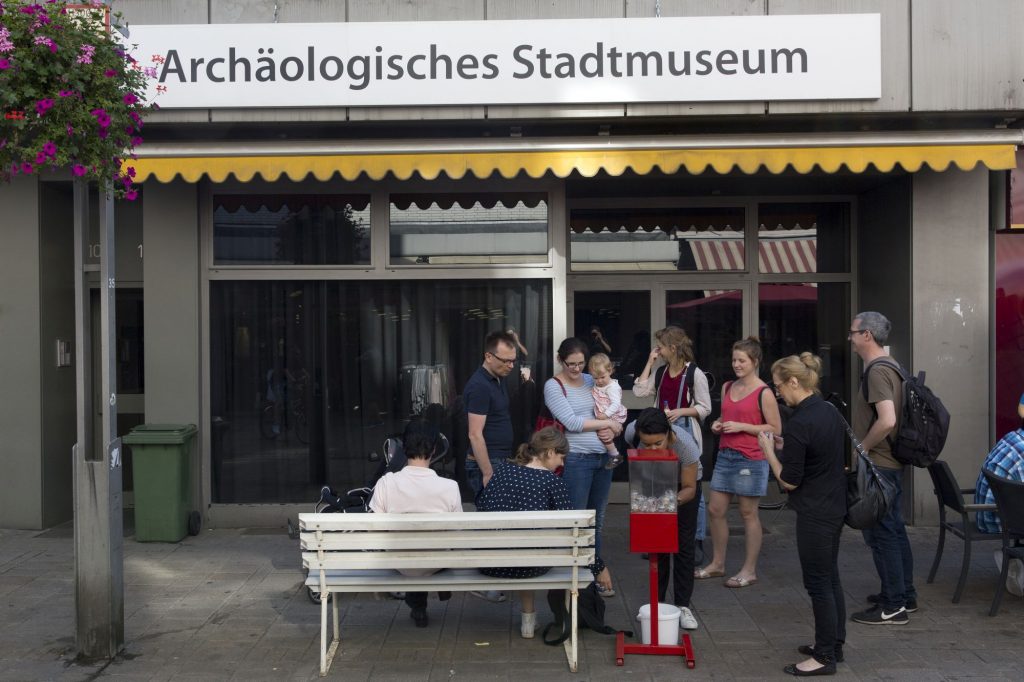 *Kaugummimuseum (c) Rainer Schlautmann – Urbane Künste Ruhr
*Kaugummimuseum (c) Rainer Schlautmann – Urbane Künste Ruhr
A city needs a history to accept and value and it also needs myths: on the main pedestrian street, in a disused commercial space, the Archaeological Museum appeared. It did not have Roman relics, nor, as is customary in the Ruhr area, glorious industrial artefacts, but presented everyday life instead.
 *Kaugummimuseum (c) Sebastian Asiedu – Urbane Künste Ruhr
*Kaugummimuseum (c) Sebastian Asiedu – Urbane Künste Ruhr
Susanne Kudielka and Kaspar Wimberley realised the first European chewing gum museum; the facility and events wanted to be a celebration of present day but also to question the role of the museum and local identity policies.
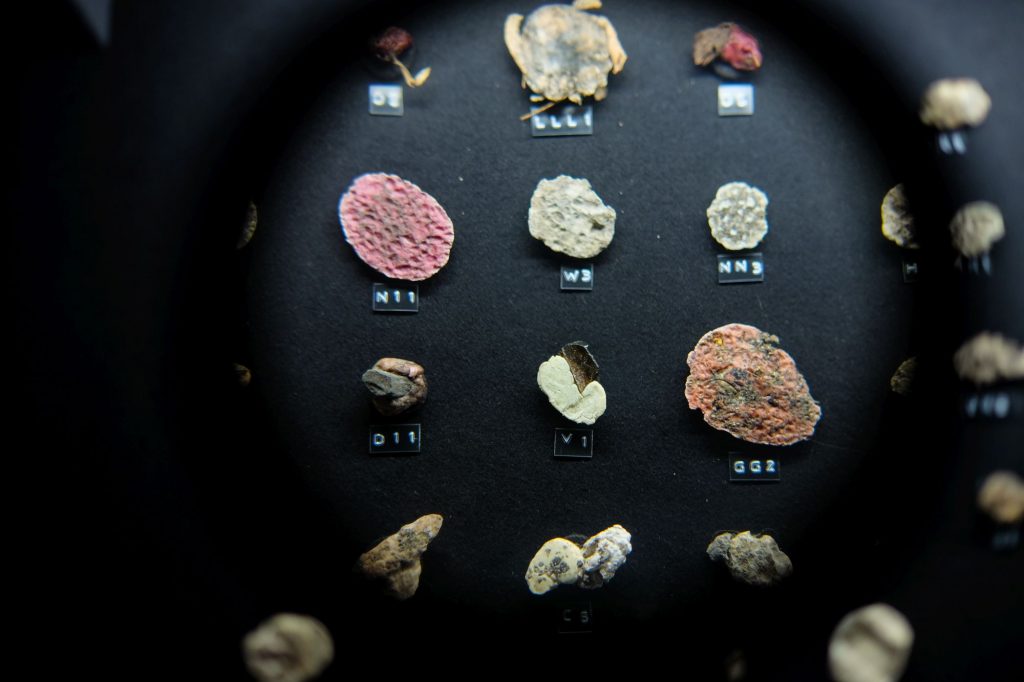 *Archaelogical Museum © Sebastian Asiedu, Urbane Künste Ruhr
*Archaelogical Museum © Sebastian Asiedu, Urbane Künste Ruhr
History and myth have been the focus of Lars Moritz’ project. He discovered and presented The Monster living in the new city. A giant lizard present first through a thorough scientific history and information from unknown archives, then through concrete traces in the city, and periodically, through dedicated safaris.
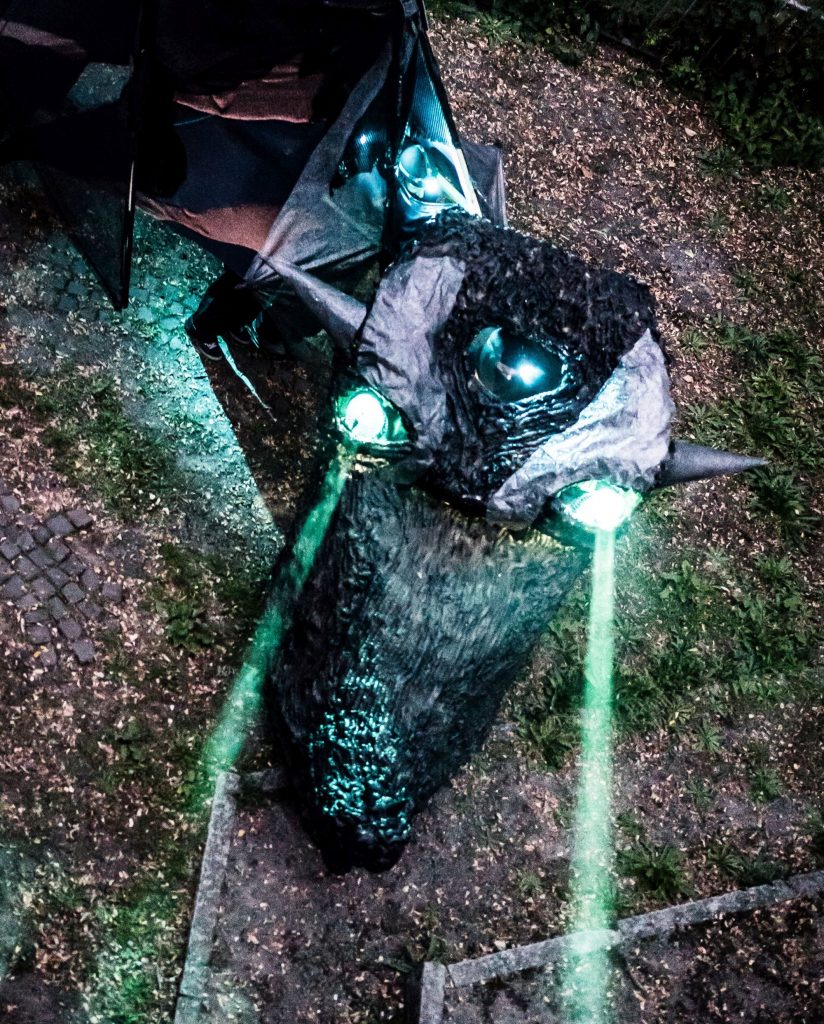 *Monster (c) Seabstian Asiedu – Urbane Künste Ruhr
*Monster (c) Seabstian Asiedu – Urbane Künste Ruhr
I’ve been in one of these, at dusk, on a seemingly natural hill in the town. Actually, like any form of relief from Ruhr, the hill is actually formed due to the massive deposition of tailings and debris from the bombings. In this artificial nature, the thick steam blowing, fiery eyed monster appeared from some old galleries, and we had to find shelter in the old observation tower until it deigned to leave. It has to be said that, as Lars assumed from the beginning, the monster has rapidly made the transition from mythical source of distress to tourist attraction of the new city.
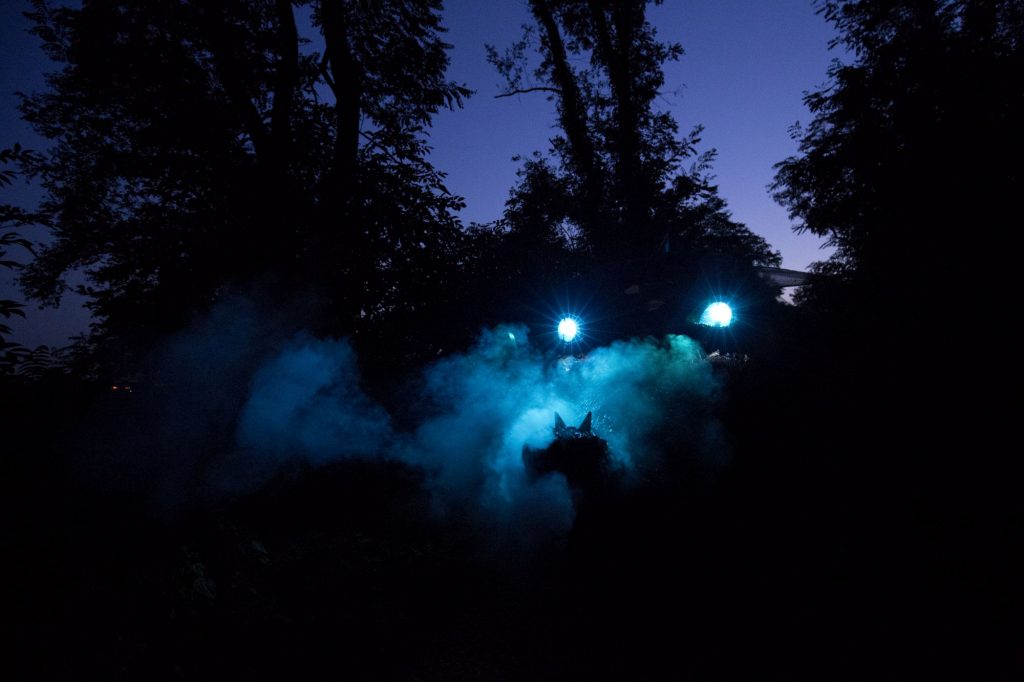
*Monster (c) Rainer Schlautmann – Urabne Künste Ruhr
I would like to conclude with the most architecture-related installation: Plot 1 is an German arrangement: a “Schrebergarten”, a garden and a small shed, as there are thousands at the outskirts of the cities: places leased or assigned initially to workers, now becoming in more complex ways individual retreats from urban life, where you can cultivate, but you are not allowed to build anything permanent. This trivial Schrebergarten has been arranged by Dirk Schlichting in the dead centre of the commercial area, former area, as a matter of fact. You can perceive this as a bitter comment on de-urbanization; but the author has thought of the teleportation in the city of a private and suburban space par excellence, precisely as an inversion of meaning: the garden and construction are available and functioned as meeting places. They became public space activators in a non-commercial paradigm.
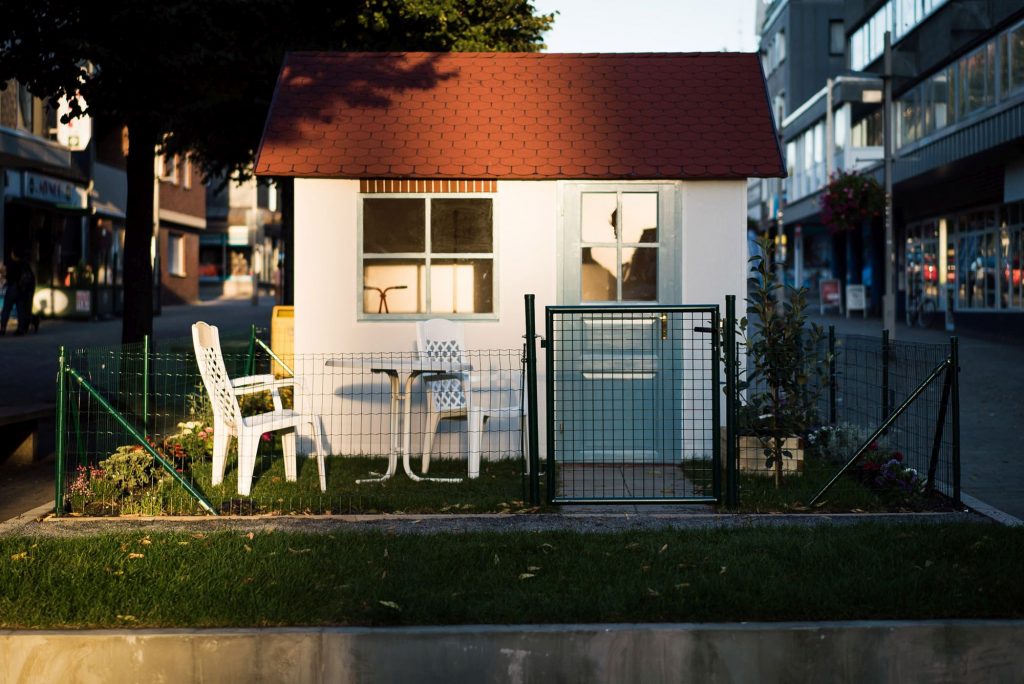 *Plot 1 © Sebastian Asiedu, Urbane Künste Ruhr
*Plot 1 © Sebastian Asiedu, Urbane Künste Ruhr
The installation had a lot of visitors and found people interested to keep, tend to and use the space. It would be a good thing – a vestige of the new provisional Oberhausen becoming a place public in the “real” city.
The whole program probably made many residents to look a little differently to the city. And it made us, the outsiders, think from another perspective, about what, beyond our houses, streets and monuments, gives a city the reason to be.
A geheimagentur production: ehrliche Arbeit – freies Kulturbüro
”We Are Building a New City” is part of Actopolis. The Art of Action, a joint project by the Goethe-Institut and Urbane Künste Ruhr
geheimagentur.net, goethe.de/actopolis

